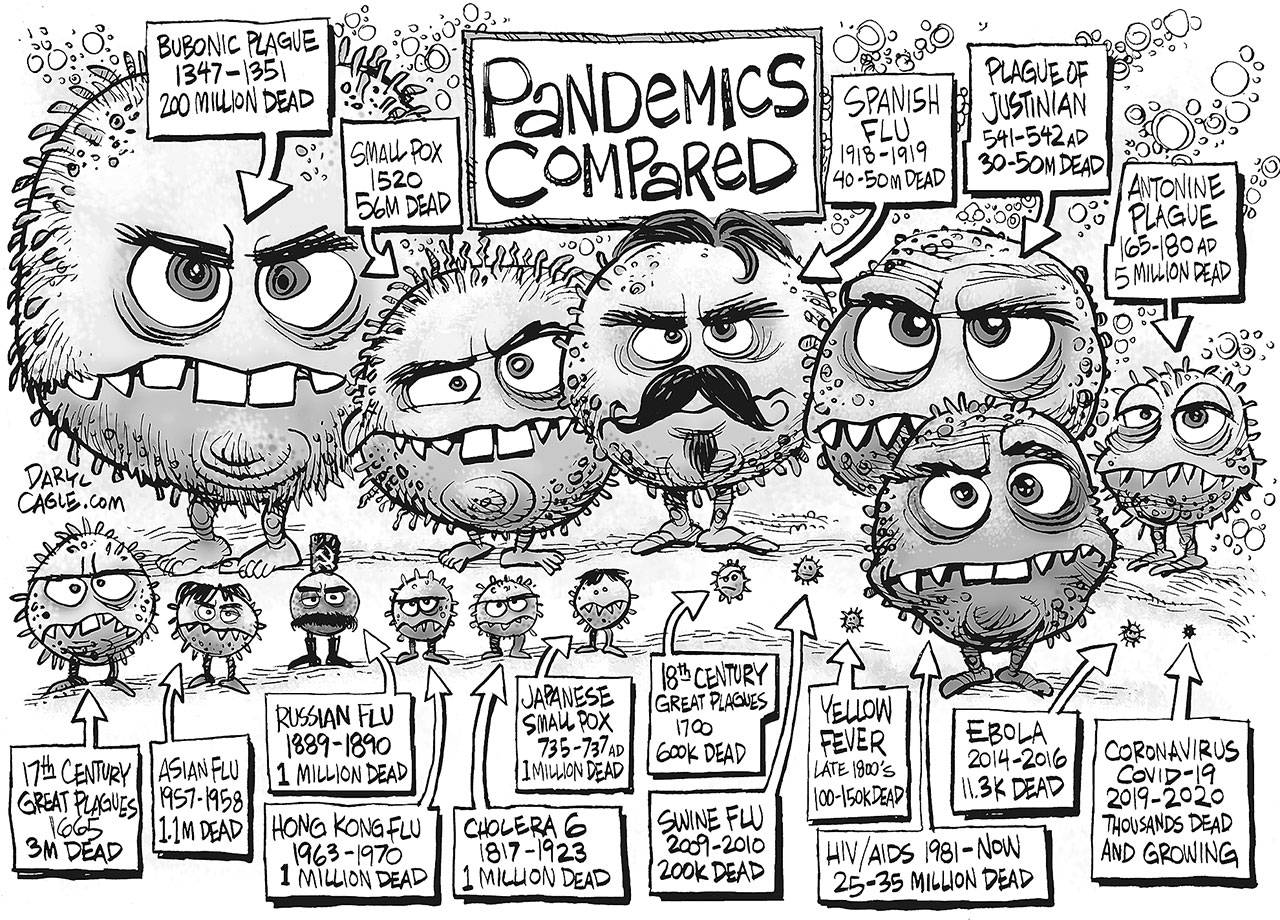By Viveca Morris
Los Angeles Times
About two-thirds of emerging infectious diseases in humans — including COVID-19, SARS, MERS, Ebola, HIV, Zika, H1N1, cholera and almost all recent epidemics — came from animals. And 70% of those originated in wildlife.
Pathogens have leaped from animals to humans for eons, but the pace of this spillover has increased rapidly over the last century. As 7.8 billion people on this planet radically alter ecosystems and raise, capture and trade animals at an unprecedented scale, “the road from animal microbe to human pathogen” has turned into a “highway,” as the journalist Sonia Shah has written.
The growing body of scientific research is clear: Diseases like COVID-19 are an expected consequence of how we’re choosing to treat animals and their habitats.
By changing the nature and frequency of human-animal interactions, our actions —through the wildlife trade, deforestation, land conversion, industrial animal farming, the burning of fossil fuels and more —propel the emergence and transmission of novel and known human infectious diseases.
Scientists suspect that COVID-19, like SARS, is caused by a coronavirus that jumped from bats to humans (perhaps via pangolins or another kind of animal) at a live animal market in Wuhan, China. In these markets, an ark’s worth of animals that rarely encounter one another in the wild are crammed together in stacked cages as they await sale and slaughter.
“You have a bird pooping on a turtle that poops on a civet,” Dr. Christian Walzer of the Wildlife Conservation Society told the New York Times. “For getting new viruses to emerge, you couldn’t do it much better even if you tried.”
China is not alone in creating ideal conditions for diseases to spill over species barriers. Every year, Americans pay to capture, box up and import hundreds of millions of live animals for agriculture, the pet and aquarium industries and other uses.
Inevitably, some of these traded animals carry hitchhiking pathogens or disturb their new environments in ways that amplify disease risk.
Monkeypox — a virus that causes a disease similar to smallpox — arrived in the U.S. in 2003 with a shipment of pet rodents from Ghana, causing a multistate epidemic that sickened at least 37 people. Floridians now face increased risk of contracting Eastern equine encephalitis due to the cascading ecological effects of invasive pet Burmese pythons in the Everglades.
But the wildlife trade is just the tip of the iceberg. Humans have altered three-quarters of terrestrial environments and two-thirds of marine environments. Our ecological domination, aside from risking mass extinctions, makes humans more vulnerable to disease.
Biodiversity can act as a powerful disease “dilutant.” In New England, people are more likely to become infected with Lyme disease in or near fragmented forests. Unlike many of their predators, white-footed mice —the primary carriers of Lyme —thrive in smaller patches of forest. More ticks then feed on those infected mice, and more “edge habitat” exists where those ticks can infect people.
The human health effects of deforestation are even more devastating in global disease “hot spots,” which are tropical areas with high wildlife biodiversity. When these forests are felled —be it in the Amazon, East Africa, Thailand or Indonesia — the mosquitoes that transmit malaria become more abundant and infect people at higher rates.
It’s not just insect-borne diseases. The emergence in 1998 of the deadly Nipah virus in Malaysia has been linked to the increase in size and density of pig farms in bat-rich areas. The virus caused fatal encephalitis among pig farmers, nearly took down the country’s pork industry and led to the culling of about 1 million pigs, many of which were buried alive.
And then we have the bio-catastrophes that are modern factory farms. We pack most of the world’s livestock animals, for all or part of their lives, into crammed living conditions that are hotbeds for viral and bacterial pathogens, and then we lace their feed with the world’s most medically important antibiotics, creating perfect conditions for antibiotic-resistant pathogens to develop. The public pays the price in the form of drug-resistant UTI and MRSA infections, feces in the air and water, and increased risk of deadly viral epidemics like the 2009 H1N1 outbreak that sickened an estimated 59 million people.
To prevent future outbreaks like COVID-19 or worse, we have to treat planetary, animal and human health as inseparable. This will require radical changes to business as usual.
To date, we’ve operated under the fallacies that medicine and ecology can be understood independently and that the conditions that impact the animal kingdom are separate from those that impact humans.
COVID-19 exposes these fallacies. Scientists estimate that animals carry more than 600,000 unknown viruses with the potential to jump to humans. How often these diseases have the opportunity to make the jump, and how prepared we are for them, is up to us.
Viveca Morris is the executive director of the Law, Ethics & Animals Program at Yale Law School.


